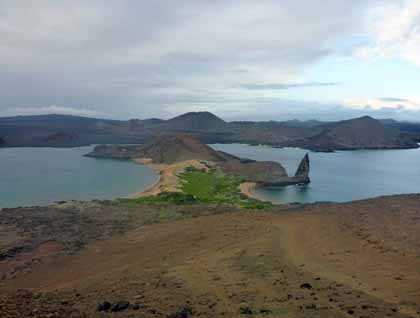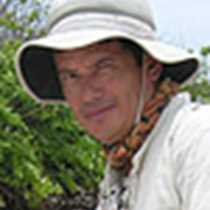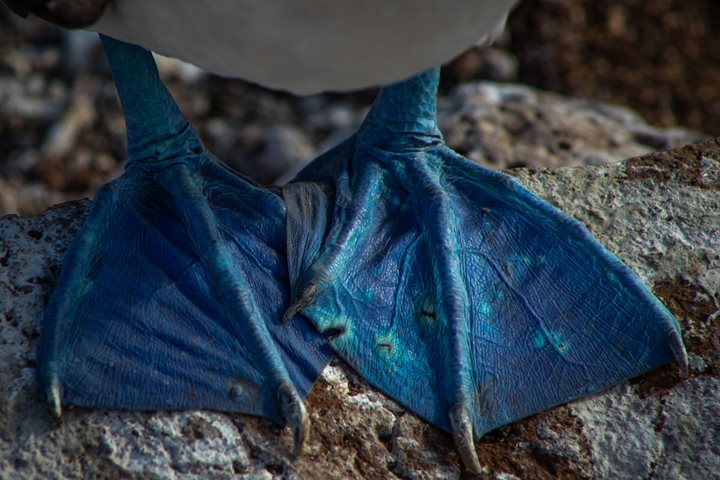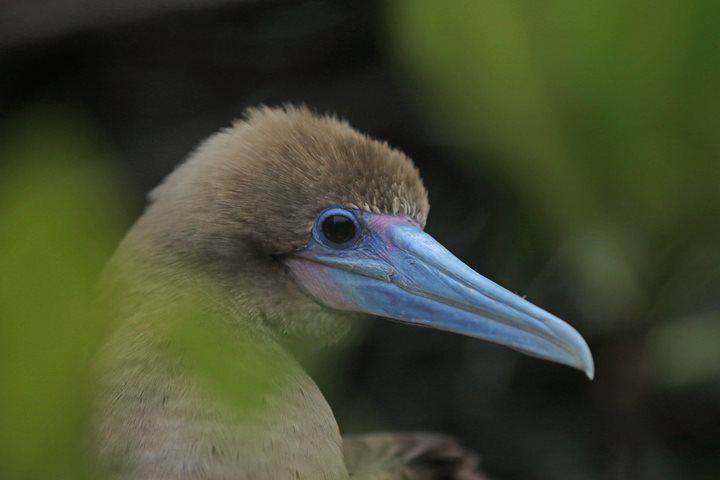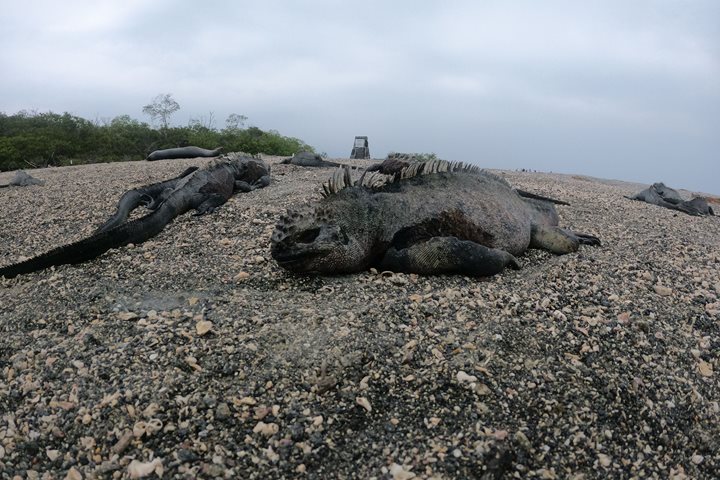If you love geology, Bartolome has so much to offer. Solidified lava flows from thousands of years ago and perfect lava tubes are proof of the volcanic activity of this island.
With the first beams of sun we headed to Bartolome Island with the mission to get to the top and enjoy the spectacular view. Along the wooden steps we observed hundreds of conical formations. Although they looked eroded, it was possible to observe their small calderas and their perfect shapes gave the appearance of a lunarscape. As we ascended to the top we were joined by curious lava lizards and lava cacti lined the way. Finally we reached the top from where we appreciated several nearby islands, and of course, the famous Pinnacle Rock with the two golden beaches separated by green vegetation. After breakfast we headed back to Bartolome for swimming and snorkeling from the beach. We discovered a great number of colorful fish, white tipped reef sharks, and some curious Galapagos sea lions resting on the rocks. After enjoying the underwater world we headed back to the National Geographic Islander to reposition the ship to our next destination, Rabida Island, which has a unique red sand beach.
As soon as we got to Rabida our guests had different excursions from which to choose- kayaking, deep water snorkeling, or walking along the beach. I disembarked on the red beach as soon we got there and a Galapagos penguin swam freely, raising its head looking for fish and then disappeared underwater. It swam very fast like a torpedo. Along the beach some Galapagos sea lions rested indifferently while on the bushes finches and warbles fluttered demonstrating their happiness due to the rainfall which occurred a few days ago. We walked inland observing the small lagoon behind the beach. Along the muddy and shallow water, some waders fed on small crustaceans while along the shore we observed phalaropes, tattlers, plovers, American oyster catchers, and laughing gulls. We moved to the beach and observed two flamingos flying over our heads and land on the lagoon. it was incredible to observe the tameness of those beautiful creatures and the way they fed on small shrimp, leaving tracks along the mud. What a great experience!
Just before sunset we returned to the National Geographic Islander and observed three more flamingos fly and land on the same lagoon. We heard their unmistakable calls, as if giving us the official farewell to this magical place.

